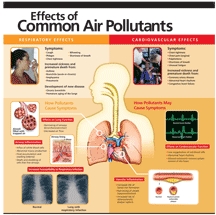Improving Air Quality by Reducing the Use of VOC Containing Products





 Many household products that families and contractors use every day contain volatile organic compounds (VOCs). VOCs are natural or synthetic compounds that can evaporate during use or when containers are open or leaking, and contribute to the formation of ground-level ozone. During the summer months, high levels of ground-level ozone contribute to unhealthy air quality days in Connecticut as measured by the Air Quality Index (AQI)
Many household products that families and contractors use every day contain volatile organic compounds (VOCs). VOCs are natural or synthetic compounds that can evaporate during use or when containers are open or leaking, and contribute to the formation of ground-level ozone. During the summer months, high levels of ground-level ozone contribute to unhealthy air quality days in Connecticut as measured by the Air Quality Index (AQI)
Elevated levels of ground-level ozone, a colorless gas, contribute to the formation of smog. This can have adverse health effects as ozone reacts with mucus membranes of the respiratory system and causes inflammation. Health effects may include breathing difficulty, coughing, and throat irritation. Breathing ground-level ozone can affect lung function and worsen asthma episodes. Children, adults who are active outdoors, and people with existing respiratory disease such as asthma are the most susceptible to the effects of ground-level ozone.
Connecticut residents use hundreds of thousands of products containing VOCs each year. Examples include home improvement products such as paints, finishes, paint removers and adhesives, and common items found in many homes, including cooking spray, air fresheners, personal care products, cleaners, laundry detergents and insecticides.
VOCs are released during the evaporation of these products, gasoline, solvents, as well as from motor vehicle and industrial exhaust.

You can help to improve our air quality and breathe easier by purchasing environmentally safe products that contain low or zero VOC emissions and by properly disposing of toxic products that you may already have . Here are some tips:
-
Purchase products that are free of toxic air contaminants such as methylene chloride found in paint strippers, and trichloroethylene found in other solvents. Need help? Green Seal and the EPA’s Design for the Environment (DfE) certify many kinds of household products that are better for the environment and your health.
-
Avoid purchasing clothing that needs to be dry cleaned or find a dry cleaner that does not use perchloroethylene (perc).
-
Make your own green cleaning products(also available in Spanish) from simple ingredients you probably already have in your kitchen! Find more environmentally friendly alternatives to toxic cleaning products.
-
Green your home and garden with less toxic products.
-
Planning on building or remodeling your home? Consider purchasing green building products and home accessories for healthier indoor air.
-
Dispose of all toxic household products at a Household Hazardous Waste collection.
-
Learn about what people are doing to be green and reduce pollution at home, work and school. Subscribe to the free DEEP newsletter, P2 View.
Content last Updated May 5, 2014



